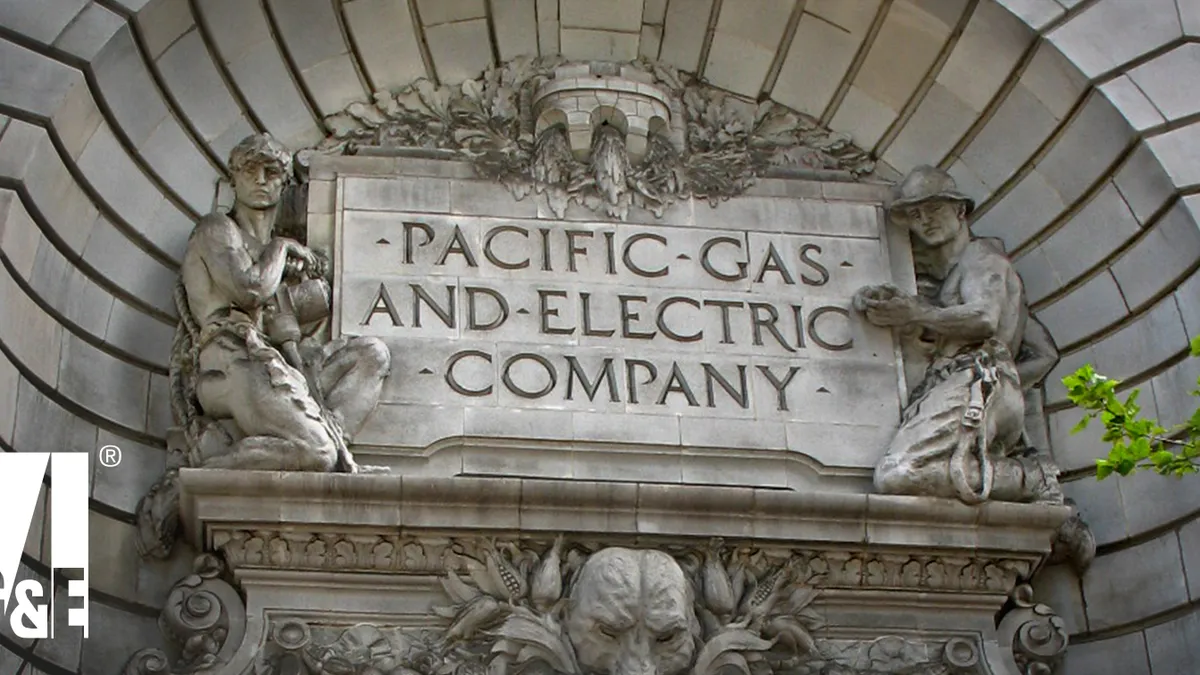Dive Brief:
-
A federal judge in California has scaled back his extensive wildfire safety proposal for Pacific Gas & Electric, even as he lambasted the utility for a "dismal" safety record that caused multiple deadly blazes in recent years.
-
In a late Tuesday order, Judge William Alsup proposed that PG&E follow the safety standards in its wildfire mitigation plan submitted to state regulators last month. He stopped short of his broader Jan. 9 proposal that would have directed the utility to reinspect its entire transmission grid and remove fire risks before the start of wildfire season this summer.
-
Alsup's preliminary ruling would also direct PG&E to submit to random independent safety tests of its transmission grid and bar it from issuing dividends to shareholders until it meets all wildfire safety standards in the order. PG&E and state agencies have until March 22 to comment on the proposal and a hearing will be held April 2.
Dive Insight:
Alsup's Tuesday order represents a reprieve for PG&E, which has been found responsible for 17 wildfires in 2017 and said last week its equipment likely caused the 2018 Camp Fire, the state's deadliest.
PG&E had argued it would be nearly impossible to meet the requirements of Alsup's Jan. 9 proposal, which would have directed the utility to remove trees or branches that could come into contact with power lines across its vast Northern California service area before the beginning of this summer.
Tree branches hitting power lines during high winds are the chief cause of recent wildfires, including the Camp Fire. If all vegetation could not be removed, the Jan. 9 order would only have allowed the utility to deliver power through parts of its grid it deemed safe.
PG&E filed for bankruptcy protection in January due to wildfire liabilities and had estimated the Jan. 9. order would cost $150 billion to implement. On Tuesday, Alsup relented.
"To address PG&E's complaints that the vegetation-management conditions proposed in the January 9 order would be unduly expensive, require superhuman efforts, and exceed the requirements of state and federal law," Alsup wrote, "the above conditions would now simply require full compliance with existing law and with the metrics proposed in PG&E's own wildfire mitigation plan."
PG&E had argued that full compliance with existing law was a stretch. California law requires utilities to clear vegetation from around electric transmission lines and remove trees or limbs that could fall on them. PG&E had said that may be impossible in some areas due to "densely forested, highly dynamic, living environments, in which conditions can rapidly change."
Alsup rejected that sentiment, writing that "anyone who knows the terrain and its vegetation knows that it takes years for trees to grow to the height of PG&E's lines."
"Regular inspections could easily spot trees that are high enough to present a hazard," he wrote, "If state or federal law is too strict, moreover, PG&E's remedy would be to seek the relaxation of such laws through its well-oiled lobbying efforts."
Under Alsup's proposed order, PG&E would have to comply fully with that California law (Section 4293 of the Public Resources Code), as well as its own wildfire mitigation plan submitted to regulators last month. That plan would expand PG&E's use of proactive grid shutdowns to prevent wildfires — a protocol it considered in the hours leading up to the Camp Fire ignition, but decided not to use.
As part of the proposed order, PG&E will submit to "regular, unannounced inspections" of its fire mitigation efforts by a federal monitor. That monitor was appointed by a judge after PG&E was convicted for felony safety violations for a separate incident — the 2008 San Bruno gas pipeline explosion that killed eight people.
Until its wildfire mitigation efforts are complete, PG&E would be prevented from issuing dividends to shareholders. Though the company suspended dividends after the Oct. 2017 wildfires, Alsup noted it paid out nearly $2 billion in dividends to shareholders before that in 2017 and 2016 combined.
"Yet, during this same period, PG&E knowingly failed to trim or remove thousands of trees it had already identified as posing a hazard," Alsup wrote. "Put differently, some of these dividends could and should have been kept and used to bring PG&E into compliance with state and federal law with respect to what has become the number one cause of PG&E induced wildfires."
One key issue remains for consideration at the April 2 hearing — whether PG&E will be required to de-energize lines in high winds unless it has proved they are safe. Alsup's Tuesday order "postpones that issue for a few weeks."













